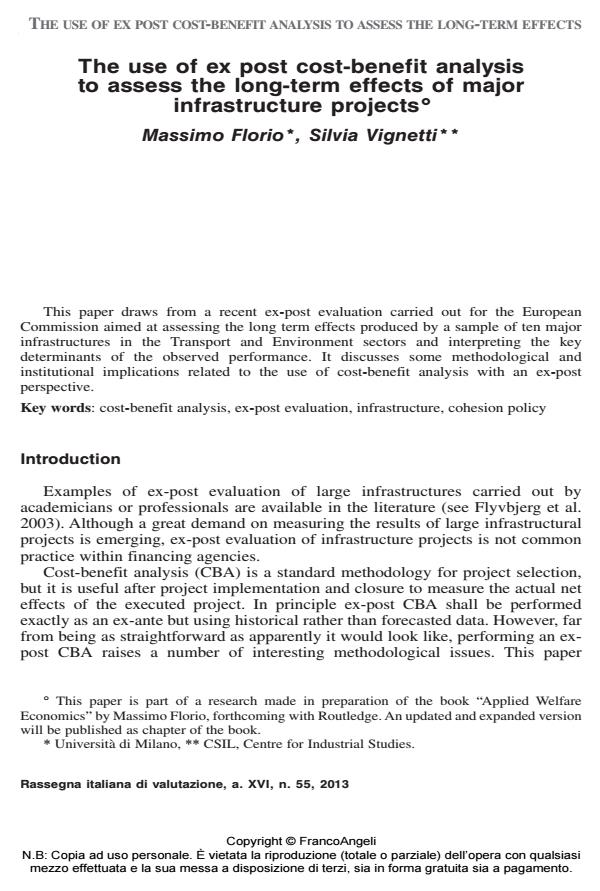The use of ex post cost-benefit analysis to assess the long-term effects of major infrastructure projects
Titolo Rivista RIV Rassegna Italiana di Valutazione
Autori/Curatori Massimo Florio, Silvia Vignetti
Anno di pubblicazione 2014 Fascicolo 2013/55
Lingua Italiano Numero pagine 19 P. 88-106 Dimensione file 597 KB
DOI 10.3280/RIV2013-055006
Il DOI è il codice a barre della proprietà intellettuale: per saperne di più
clicca qui
Qui sotto puoi vedere in anteprima la prima pagina di questo articolo.
Se questo articolo ti interessa, lo puoi acquistare (e scaricare in formato pdf) seguendo le facili indicazioni per acquistare il download credit. Acquista Download Credits per scaricare questo Articolo in formato PDF

FrancoAngeli è membro della Publishers International Linking Association, Inc (PILA)associazione indipendente e non profit per facilitare (attraverso i servizi tecnologici implementati da CrossRef.org) l’accesso degli studiosi ai contenuti digitali nelle pubblicazioni professionali e scientifiche
This paper draws from a recent ex-post evaluation carried out for the European Commission aimed at assessing the long term effects produced by a sample of ten major infrastructures in the Transport and Environment sectors and interpreting the key determinants of the observed performance. It discusses some methodological and institutional implications related to the use of cost-benefit analysis with an ex-post perspective.
Parole chiave:Cost-benefit analysis, ex-post evaluation, infrastructure, cohesion policy
Massimo Florio, Silvia Vignetti, The use of ex post cost-benefit analysis to assess the long-term effects of major infrastructure projects in "RIV Rassegna Italiana di Valutazione" 55/2013, pp 88-106, DOI: 10.3280/RIV2013-055006